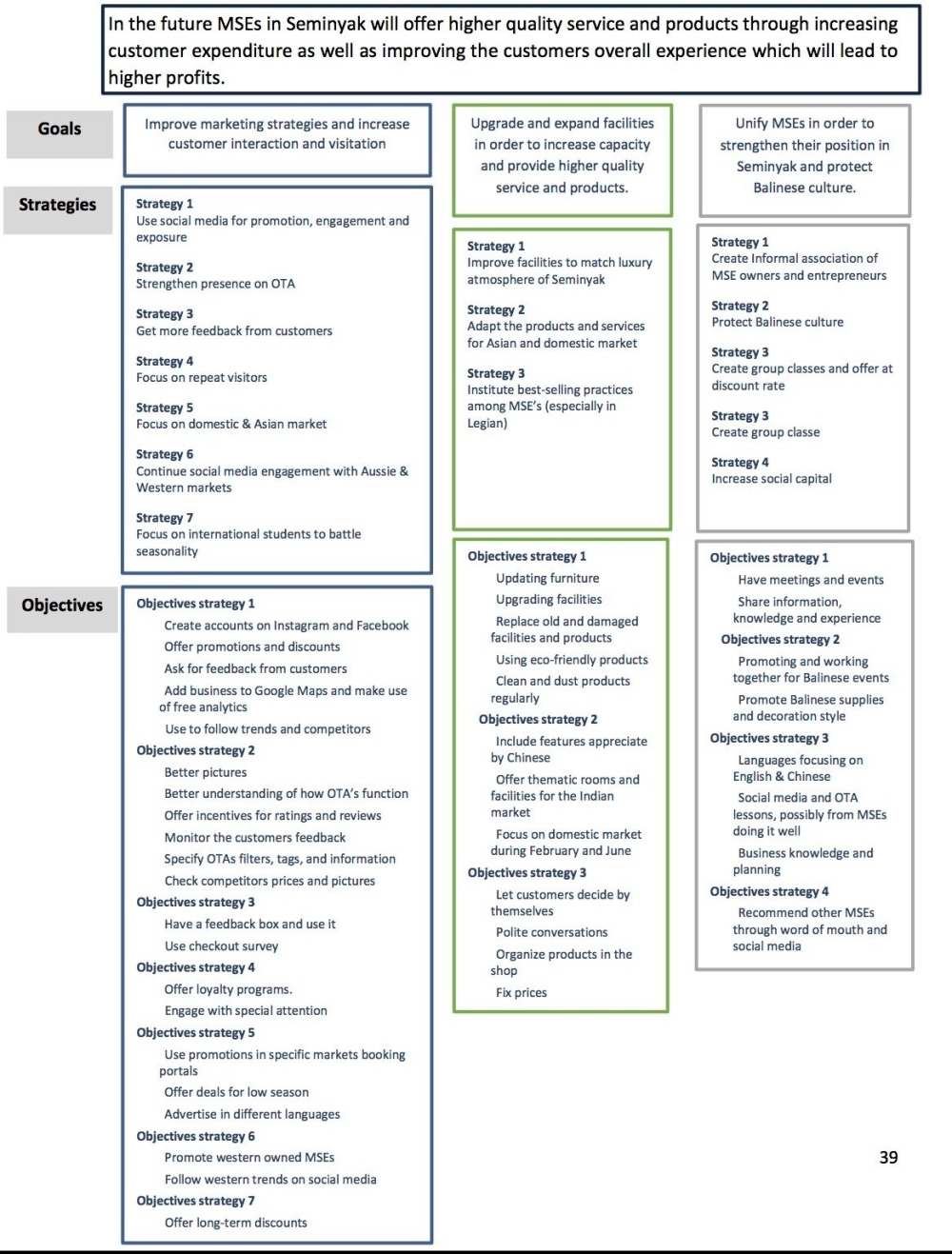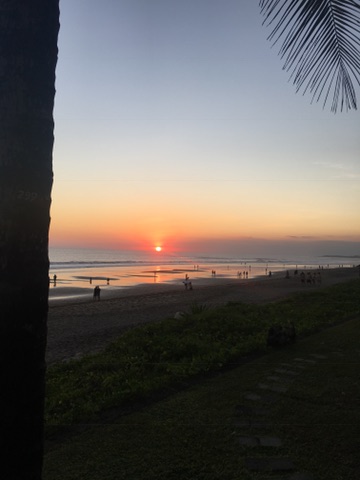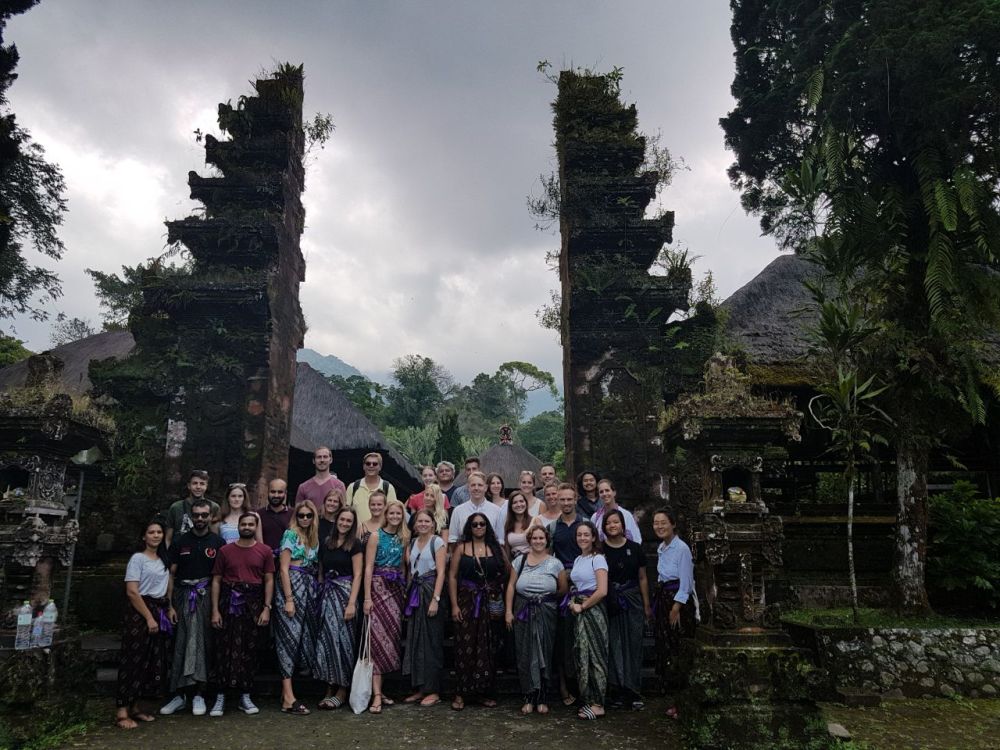In the third and last destination in Phase 2 of TDM, we were lucky enough to go to Bali. For this final destination, we looked at the preferable future for Micro & Small Enterprises (MSEs) and developed effective interventions for achieving this future. Through over 30 face to face interviews and particpant observation, our group developed effective interventions for Seminyak MSEs.
My group’s vision and some of the corresponding goals and strategies are below:

Goal 1: Improve marketing strategies and increase customer interaction and visitation
The first goal focuses on how MSE can effectively market to their different customers and thus increase customer interaction and visitation. A major trend in today’s world of tourism and in the future is online sales through different online channels like online travel agencies (OTAs) as well as social media. Therefore it is important to know how to effectively manage and use these channels to attract different markets (Alessandro & Lorenzo, 2014).
Strategy 1: Using social media for promotion, engagement, and exposure.
“43% of customers expect customer service via social media to be integrated into companies” (Hoffman, A. & Hoffman, E., 2017). Objectives for achieving this strategy include creating accounts on Instagram and Facebook, offering promotions and discounts on these accounts, asking for feedback from customers on social media, and using these accounts to follow trends and competitors. Another objective is to add the business to Google Maps, add the correct information, highlights, and pictures and make use of the free analytics like the popular times and reviews. Research on social media has found that it has greatly changed the nature of tourism marketing as it plays a large role in travelers travel research (Hospitality Technology, 2016). Therefore, it is important for MSE to be active and leverage social shares, positive reviews, and display how much their business has to offer.
24 out of the 39 MSE interviewed have social media accounts, however, their usage and activity are not the same. Some MSE focus on the exposure aspect of social media like White Peacock Cafe who stated that social media is “free promotion” and Orchard Pub who has a special social media team and live streams 7 events and concerts on Instagram. This exposure is especially prevalent with “instagrammable cafes” like Jungle Toppings, Kim Soo Cafe, Revolver, Neon Palms and White Peacock. Instagrammable cafes focus on the presentation of the food and restaurant, looking to get as many hashtags, posts, and followers as possible from its customers on Instagram. One technique for getting these hashtags and followers was seen at La Calaca which has promotional material on the tables, including “Stalk Us! @lacalongtime”. La Calaca is also an example of using Instagram for discounts and promotions like “Instagram Giveaway- Sunday Brunch for Two” which requires customers to follow their page, tag their friends, and subscribe to their newsletter in order to enter a drawing for a free brunch. While MSE like Charlotta Salon use social media to stay on top of the latest fashion and hair trends but does not use social media itself. Furthermore, while 24 MSE state they have social media they are not all active, like Chicken Brothers and Borough Hostel who have not posted in over a year. However, these practices are not seen throughout the whole area and are much less in Legian and Inner Seminyak. Use of social media has been shown to increase customers in MSE that strongly engage with the platforms making it an important recommendation for increasing visitation.
Strategy 2: Strengthen presence on online travel agencies (OTAs)
All of the 12 accommodations interviewed use OTAs for bookings and Tripadvisor is also used by the majority of restaurants and cafes. OTAs being used by both MSE and medium and large organizations (MLOs) contribute to MSEs largest challenge of price competition. Strategies for improving their presence on OTAs include having better pictures of facilities, a better understanding of how OTA’s function, offer incentives for reviews, monitoring feedback, applying specific OTA’s filters and tags, and checking competitors. Providing better pictures is a low-cost solution that has also been used by Airbnb founder Joe Gebbia, who during the beginning of Airbnb went door to door to his hosts and took pictures focusing on lighting and composition and saw an immediate improvement in bookings (Airbnb: Joe Gebbia, 2016). Likewise, the differences in picture quality and bookings can also be seen in Seminyak for example Jineng Villas photos on booking.com stand out from other MSE interviewed through the use of lighting, cleanliness of the room, bold colors, and focus on details like adding fresh flowers to rooms and a delicious looking breakfast by a pool bed. Jineng Villas shows both their facilities and possible services in an attractive way.
Offering incentives for feedback on these sites as well as monitoring the feedback allows MSE to overcome weaknesses noted by their customers and make appropriate changes. This was seen through Borough Hostel who offers a free beer for customers who leave a Tripadvisor review. Also Neds Hideaway, through monitoring reviews noticed the importance of improving the strength of the villas Wifi. Furthermore, by understanding OTA’s better and how to use the filters and tags it can attract their specific markets and make it easier for guests to find them. Moreover, using Booking.com to check competitors will keep the MSE up to date in the trends in Seminyak. The prevalence of OTA’s and their continued importance in the future demonstrates that if MSE strengthens their presence on these websites they are likely to see an increase in customers.
Goal 2: Upgrade and expand facilities in order to increase capacity and provide higher quality service and products
The second goal to achieve the vision is focused on the quality and quantity of the facilities offered by the MSE. The overall objective of the goal is to make MSE more attractive and therefore more competitive. Four strategies have been identified in order to accomplish the goal. Each strategy includes effective interventions to facilitate the implementation. Examples of MSE that are already using those interventions will be provided to give proofs of their success.
Strategy 1: Improve facilities to match luxury atmosphere in Seminyak
Bali has become a popular destination for luxurious trips and for the first time it has been included in the 2017 Forbes Travel Guide Star Awards (Kester, 2017). Results from this research, both participant observation, and interviews, have supported the luxurious vibe that Seminyak offers: “Seminyak is more expensive” (De Puspa Residence), “Seminyak is for well to do people” (Charlotta’s), “people can spend more money” (White Peacock), “Seminyak is for more exclusive people” (Moomoos restaurant) and “Seminyak want to be more modern” (Bodyworks). This strategy is mainly addressed to MSE in Seminyak since other areas did not show this trend. Five practical interventions are suggested to achieve this strategy. First of all, update the furniture such as changing beach bean bags and umbrellas at the beach. Many Villas have modernized their furniture and have seen more positive feedback from customers (for example Ned’s Hide Away). Secondly, upgrade facilities such as adding a pool, Wi-Fi, parking or more rooms. De Puspa Residence believes they could attract more visitors by building a pool. Thirdly, replace old and damaged facilities and products and clean and dust products regularly. Finally, use eco-friendly products such as metal or paper straws, reusable bags and reusable coasters. The picture shows a drink with a paper straw and a paper coaster used by La Calaca.

Goal 3: Unify MSE in order to strengthen their position in Seminyak and protect the Balinese culture.
In order to achieve the vision, goal three focuses on the higher quality service as well as improving the customer’s overall experience. Four strategies have been identified to strengthen the destinations position in general as well as the role of MSE in the Seminyak area. Effective interventions and instruments are given to achieve the strategy and therefore the overall vision.
Strategy 1: Create an informal association of MSE owners and entrepreneurs
If MSE unifies in the area by creating an informal association with several owners and entrepreneurs will likely lead to a stronger position in the area. The informal association is defined as a local resource network. Instruments to achieve this strategy can be described as organizing meetings and events and sharing information, knowledge, and experiences.
Some MSE owners organize a ‘’Sunday meeting’’ in the area, with friends and young entrepreneurs. The research shows that it is helpful for MSE to support each other. The owner of the White Peacock café in Seminyak Square mentioned he is working with other cafes in the area such as Coffee cartel and Kynd community. They share information and recipes to support each other and to improve their businesses. Also the Warung Ipang restaurant mentioned they work closely with other business to promote each other and give discounts. There is a number of business groups and networking clubs that promote professional interests and help members with various business-related activities. Their goal is to embrace the diversity of businesses representing products and services available in Bali. For example, the Bali Business Club (BBC) organizes every first Tuesday of the month lunch meetings. These meetings are used for a scheduled presentation concentrated on the topic of interest, which is available to members coming from a variety of industries, business, and commerce. To conclude, if MSE organizes meetings and events in order to share information, knowledge, and experiences, their position in Seminyak area is likely to be stronger.
Strategy 2: Protect the Balinese culture
The research showed that the Balinese culture is an important value and characteristic for Seminyak area MSE. Instruments which can be used for achieving the strategy are described as followed: promoting and working together for Balinese events and promote Balinese supplies and decoration style.
If MSE are promoting and working together for Balinese events then they will enhance the overall tourism experience. As well as promoting Balinese supplies and therefore, the unique Balinese decoration style. Villas and guesthouse owners mentioned ‘’keep the treasure, our Balinese culture’’. Majority of interviewees mentioned all the products they use are locally sourced. Special to Balinese culture is the Banjar which is the village level government and who determine traditional laws and dates for religious events, collect money for ceremonies, allocate temple maintenance and oversee land sales (WHYGO.COM Bali, 2018). Therefore, MSE can work together with the Banjar to promote Balinese events.
Through following these interventions MSEs in Seminyak can improve their quality and work together to be more successful in the future.









